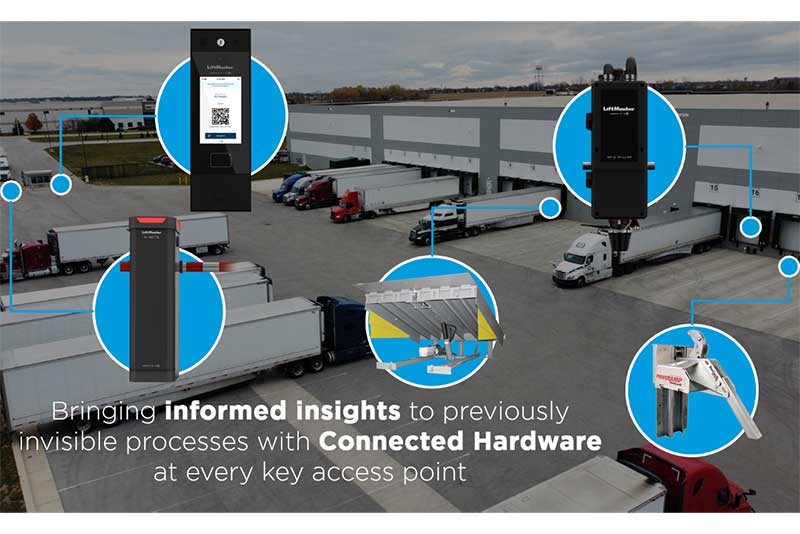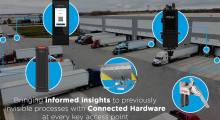While warehousing has been around for a long time, developments in transportation and commerce over the past 25 years have led the Supply Chain industry to evolve rapidly. Most notable has been the digitization and automation of warehousing systems. Warehouse Management Systems have been around since the 1970’s. Since then, these systems have progressed over the years from tracking inventory to automating all activities within the four walls of the warehouse, helping warehouse operators to manage operating costs, labor and throughput.
But there’s one part of most warehousing and distribution center operations that has largely not yet been digitized or automated – managing loading dock operations and optimizing flow of onsite truck traffic.
The Current State
In today’s supply chain world, it is still quite common for inbound and outbound truck traffic and loading dock operations to be managed through a series of manual processes and disconnected systems. While each operation is a bit different, most include some of these characteristics:
- Appointments for incoming trucks are scheduled via phone call or emails or maybe through an online platform that is disconnected from other dock operation systems
- Daily plans are managed on whiteboards or spreadsheets
- Drivers are greeted by security guards at the facility gate who then radio or call warehouse operators to find our which dock doors are available to send incoming trucks
- Clerks sort through widely varied paperwork to identify shipments
- Arrival and departure times are tracked on paper logs
All of these manual processes have become familiar, but can present challenges. For example, training and maintaining staff to manage manual processes is very expensive in today’s challenging labor market. And manual check-in processes can be slower and lead to backed up trailers resulting in traffic flow problems and inefficient dock operations.
At busy operations, with a lack of visibility into what’s going on at loading docks or in the yard, it can be easy to lose track of trailers and drivers resulting in longer dwell times, frustrated drivers and late fees. Keeping up with the status of all your docks and yards without real-time visibility can require physically monitoring locations.
Most sites have those one or two key people can work to manually run the operation smoothly, but it’s a struggle when they aren’t there. Trailers can be delayed in assignments or sent to suboptimal loading docks, impacting operational costs.
And lastly, key information is trapped on white boards, emails and paper logs making it inaccessible for meaningful reporting and analytics to understand and improve performance. Even worse, when faced with a late fee claim, it’s hard to prove what actually happened during the driver visit.
The Solution
The good news is that there’s a better way. Busy warehouses and distribution centers can modernize their loading dock and truck traffic operations with myQ Enterprise, the only connected hardware / software solution that streamlines driver scheduling, simplifies check-in and provides real-time data and communication. Automate loading dock assignments and processes with meaningful data insights with end-to-end visibility to transform logistic operations.
- Digitizing and automating dock operations brings a bevy of benefits:
- Reduce the amount of labor needed to manage appointments into and out of distribution centers.
- Automate communications and connect with driver via their mobile devices or smart kiosks with dock assignments and clear instructions on exactly where they need to be, so they can get in and out of the facility as quickly as possible
- Eliminate paper-based processes and the possibility of manual entry errors
- Enable self-service driver check-in including automated dock and yard assignments based on a smart rules engine. Set priorities for dock assignments and how to handle early or late arrivals.
- View the entire loading dock and yard from one platform. Monitor schedules and trailers onsite, manage loading activity, and receive alerts of inefficiencies or safety concerns at docks.
- Real-time notifications ensure action is taken at the exact right time.
- IoT equipment and sensors automatically capture data, so you know what is working efficiently and what isn’t.

Modernizing dock operations can bring tremendous benefit to any warehouse or distribution facility that has significant truck traffic or busy loading docks. For example, with myQ Enterprise one customer was able to reduce planned overtime by 1 hour per day for their entire receiving team. Along with other labor savings from security staff and receiving coordinators, this resulted in more than $400K in cost savings per year.
Find out how modernizing loading dock operations and truck traffic will help optimize logistics, improve trailer turn times, reduce detention fees and reduce labor hours all while improving safety. Create opportunities for continuous improvement of operational expenses over time with meaningful data and insights.
Article topics









